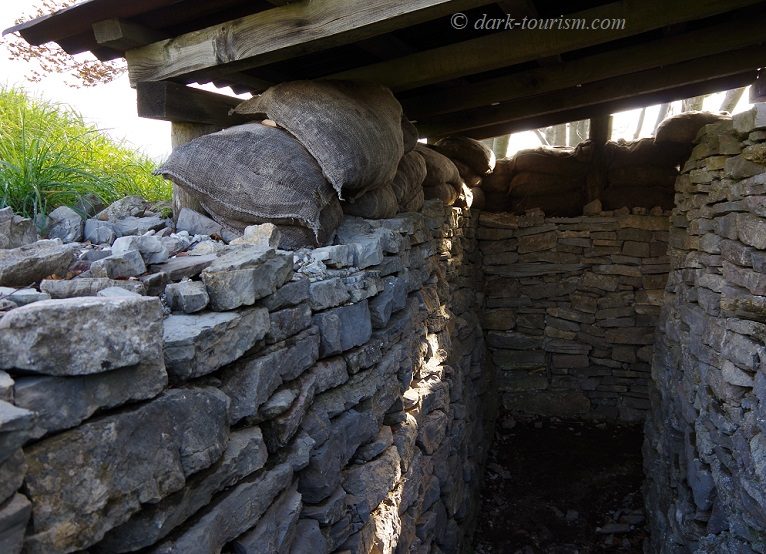| |
|
| ||
|
| |
Poll result, a historic day, WW1 Hello subscribers! First of all, here’s the result of our latest theme poll (which is now closed): we have joint winners as both attracted exactly the same number of votes, so, rather than tossing a coin, I will do both. ‘DT & food’ had long been ahead but ‘DT & pianos’ caught up later, so I’ll do the former this coming week and the latter the week after. ‘DT and planes’ came third, so that’ll be fielded again at some point, while ‘DT & furniture’ (cool as it would have been, though) will have to wait longer to get another chance. On the DT blog, one new post went up earlier today, which marks today’s date, 23 May, in dark history. That included Italy joining WW1, the shooting of Bonnie & Clyde, developments in post-WWII Germany and a tsunami in Hilo, Hawaii. I’ve picked as this newsletter’s lead photo above one of the images that post has for Kolovrat. That’s a system of fortifications and trenches on today’s mountainous border between Slovenia and Italy. These reconstructed World-War-One relics are on the Slovenian side (if only just) and provide a vague idea of what mountain warfare would have been like. This would have been part of the Isonzo front, named after the Italian name for a river that in present-day Slovenia is called Soča and runs mostly parallel to this border. Italy joined the war on the Allied side in 1915 on the promise (according to the 1915 Treaty of London) of some Slovenian and Croatian territories that were then occupied by the Austro-Hungarian Empire. That Empire and the Kingdom of Italy fought 12 bitter battles on the Isonzo front between June 1915 and November 1917. The Italian side suffered a bitter defeat in the final battle and some substantial territorial losses, but since the Austro-Hungarian Empire ultimately was on the losing side of WW1 overall (and consequently broke apart), Italy did not only get its lost territory back but also annexed parts of Slovenia (though the Treaty of London was not fulfilled by France and Britain). Italy lost these lands again at the end of WWII when they became part of the newly formed socialist federation of Yugoslavia, which in turn fell apart in the 1990s, with Slovenia finally becoming independent in 1991. But here endeth the history lesson about this not particularly well-known corner of Europe. What else is there to report? Not all that much. I’ve made further progress with my writing up of chapters for my main website, namely for the various WW1 sites I visited years ago in France. I’m currently deep into the Somme, and a couple of chapters (the base text as well as Albert and Péronne) are already up. And before that I had uploaded five chapters related to sites north of the Somme, namely Wellington Quarry in Arras, Vimy Ridge (location of the Canadian National Monument), Notre Dame de Lorette (the largest French war cemetery), and a quite recently added modern museum at the foot of the same hill, plus a chapter about a true pilgrimage: the Wilfred Owen trail in Ors (for the non-Brits: Wilfred Owen is the most revered of the British WW1 poets; he was tragically killed in Ors just one week before the Armistice of November 1918). Now I have five more chapters to write for the Somme, which I hope to finish this coming week, then I’ll have to turn to Verdun and that’ll be WW1 done for me. But it’s still lots of work before I get there. So much for this time. Have a good week and stay safe. Best wishes, Peter |
|
| |
|
| |||
|
